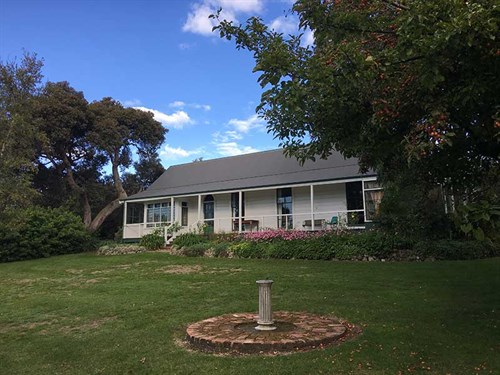It may just be a coincidence but a slightly pukka ambience defines New Zealand’s Havelock North.
Buying a house here is like buying a ticket in the dress-circle of the Heretaunga Plains and the village centre is embraced by hills of opulent houses—both old and new—and flourishing, expansive gardens.

Two exclusive boarding schools for girls, Woodford House and Iona college, are located discreetly among luxuriant lawns and exotic trees.
At the foot of Te Mata Peak, is the equally prestigious Hereworth, a private school catering for boys of primary and intermediate age.
HAVELOCK'S NAME
Dubbed (rather pretentiously) ‘the jewel of the bay’, Havelock North was named for Sir Henry Havelock, distinguished commander-in-chief of the British forces in India, triumphant in the relief of Cawnpore and the defence of Lucknow during the Indian mutiny.
His has a military career so illustrious that an imposing statue of him graces Trafalgar Square in London and another in Mowbray Park, Sunderland. The rest of the world is littered with villages, cities, roads, halls, and even an island that carry the Havelock name.
HISTORIC LAND OWNERS
There are still traces of the rural gentry who lived in the hills around Havelock, the wealthy sheep farming families who owned large tracts of land and whose names held status.
And although well-heeled, many of Havelock’s earlier forefathers could not be considered conservative. The early village was also a centre of ‘alternative thought’ and liberal theology.
Some 19th-century landowners were Quakers, a movement that had a history of challenging established religions.
Others in the Havelock North area were liberal Anglicans who encouraged practices such as ritual mysticism. Then into this setting came an English medical doctor and High Mason, Robert Felkin and his family.
They brought with them a theosophist English movement called the Hermetic Order of the Golden Dawn and set up the Smaragdum Thalasses temple of Stella Matutina in their house.
Whare-Ra (House of the Sun) was built for them by architect J.W. Chapman-Taylor. Now it is privately owned and has a category one historic places rating but it is difficult to spot, as it is tucked away behind tall trees down a long driveway.
HAVELOCK NORTH TODAY

These days, the land-owning families have largely dispersed but some of their legacies remain. One in Havelock North is the extravagantly lush Keirunga Gardens on Pufflit Road.
It was gifted to the people by George Nelson who, along with others, fostered the development of cultural pursuits in the district. In the same spirit, meetings today are held in the old Nelson homestead.
They comprise garden clubs, potters, artists, actors, photographers, embroiderers, spinners, and Morris dancers.
I can’t see myself Morris dancing but I like to meander through the gardens and ponder the implications of Hermetic Order of the Golden Dawn. I’ve no idea what it means, but it brings to mind the picture of a lonely man watching the sun come up.





